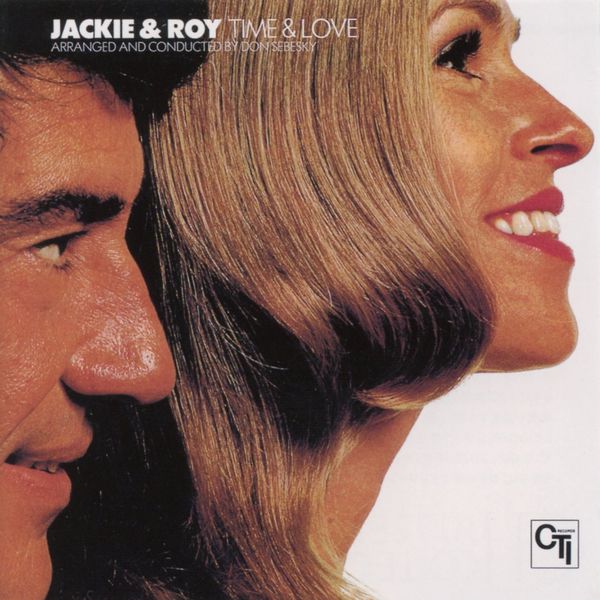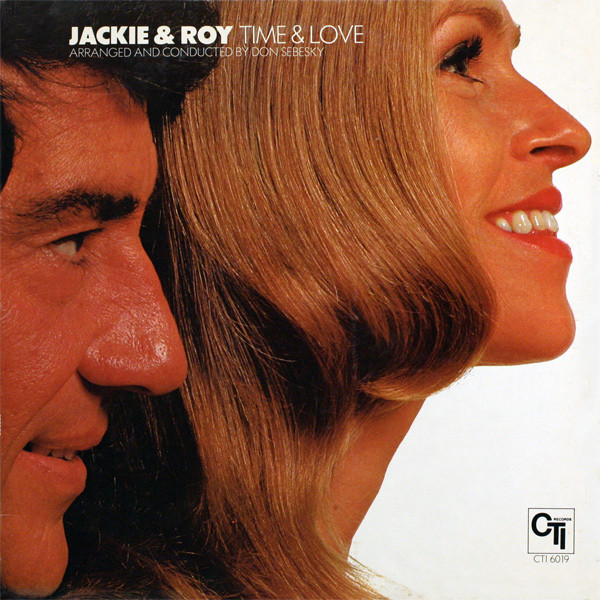 Jackie and Roy: Time & Love
Jackie and Roy: Time & LoveCTI Records CTI 6019
Released 1972
A1: Day By Day 4:38
A2: Time & Love 2:21
A3: Summer Song / Summertime 4:35
A4: Bachianas Brasileiras #5 4:20
B1: A Simple Song 5:45
B2: Heading 2:47
B3: Lazy Afternoon 4:35
B4: We Could Be Flying 4:40
Arranged By, Conductor – Don Sebesky
Bass – Ron Carter
Bass Trombone – Paul Faulise
Cello – Alan Shulman, Alla Goldberg, Anthony Sophos, Charles McCracken, Lucien Schmit, Seymour Barab
Clarinet, English Horn, Bass Clarinet, Alto Flute – George Marge
Design [Album] – Bob Ciano
Drums – Billy Cobham
Electric Piano – Bob James
Engineer, Mastered By – Rudy Van Gelder
Flute, Oboe, Clarinet, Alto Flute – Phil Bodner, Romeo Penque
French Horn – Jimmy Buffington, Peter Gordon
Guitar – Jay Berliner
Harp – Margaret Ross
Liner Art – Gerrie Blake
Organ – Pat Rebillott
Percussion – Airto Moreira, Phil Kraus
Photography By – Pete Turner
Piccolo Flute, Alto Flute, Bass Flute – Hubert Laws
Piccolo Trumpet – Marvin Stamm
Producer – Creed Taylor
Trombone – Garnett Brown, Wayne Andre
Trumpet, Flugelhorn – Alan Rubin, John Frosk, Marvin Stamm
Viola – Alfred Brown, Emanuel Vardi
Violin – Bernard Eichen, Charles Libove, David Nadien, Elliot Rosoff, Emanuel Green, Felix Giglio, Harold Kohon, Harry Cykman, Harry Lookofsky, Irving Spice, Max Ellen, Max Pollikoff, Paul Gershman, Raoul Poliakin
Vocals – Jackie Cain, Roy Kral
Recorded at Van Gelder Studios, June 1972
Amazon product ASIN B00JF7NEXY

Time & Love, Jackie & Roy - Qobuz
Listen to unlimited streaming or download Time & Love by Jackie & Roy in Hi-Res quality on Qobuz. Subscriptions from $10.83/month.

Jackie & Roy - Time & Love
Explore songs, recommendations, and other album details for Time & Love by Jackie & Roy. Compare different versions and buy them all on Discogs.
 www.discogs.com
www.discogs.com
Last edited:







